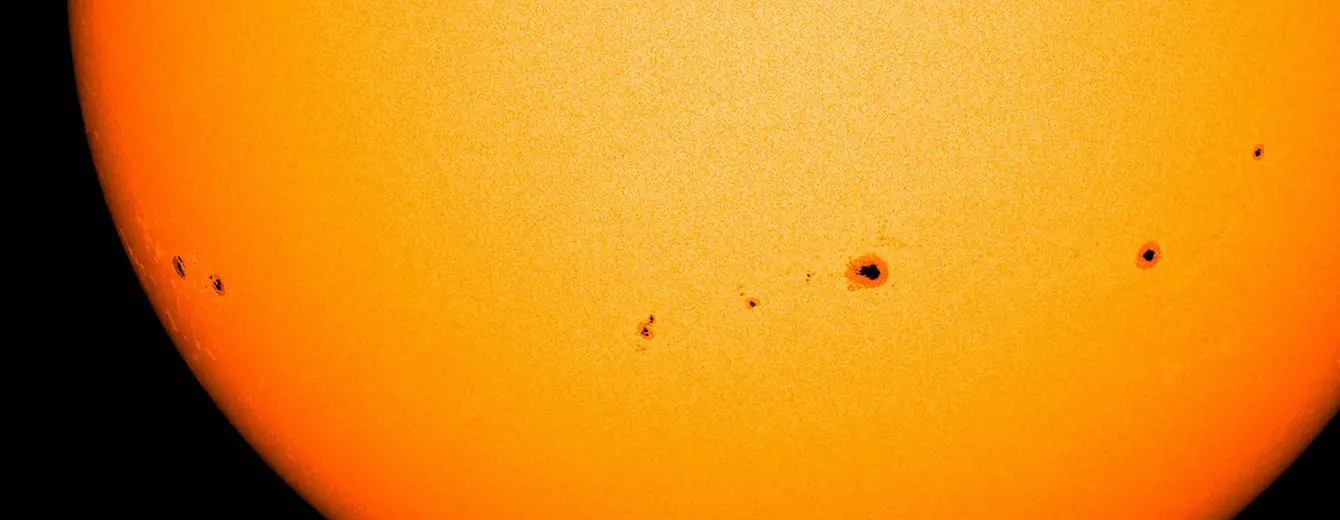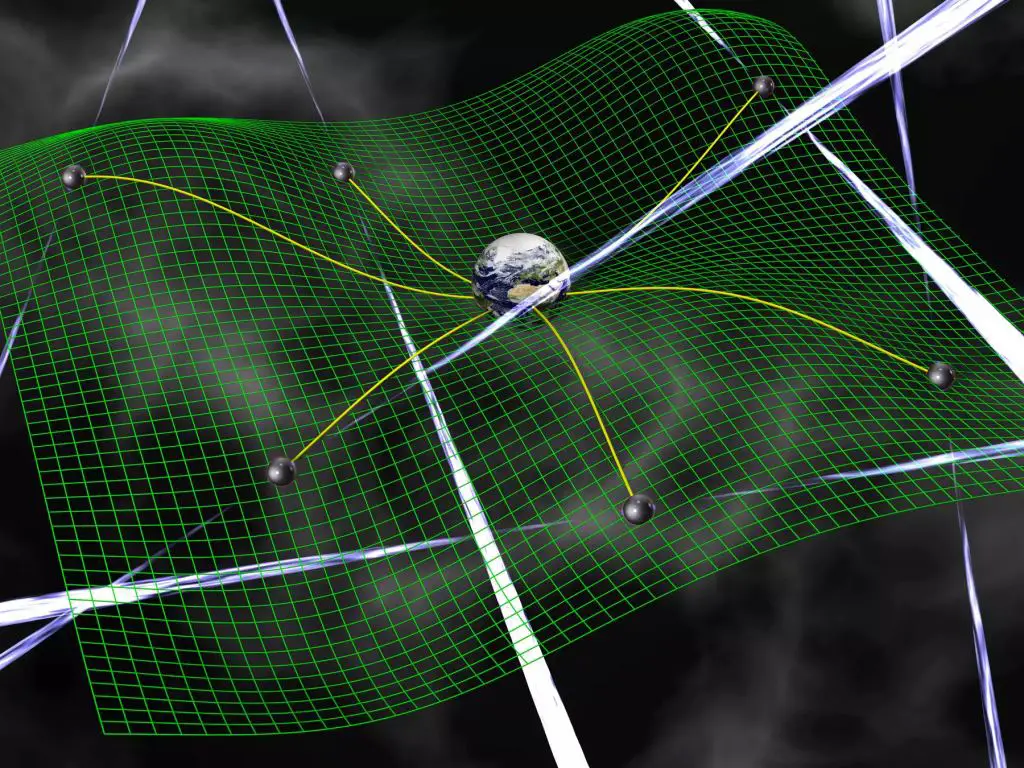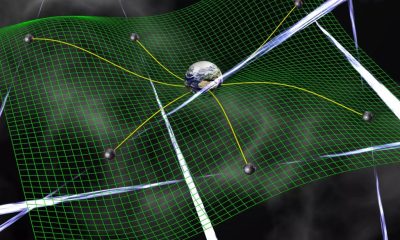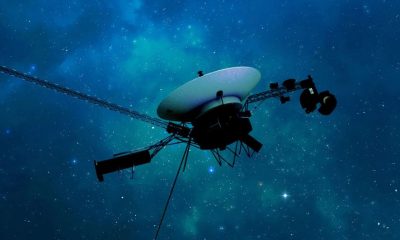News
Roman is going to study the ages of hundreds of thousands of stars

Astronomers routinely provide the ages of the stars they study. But the methods of measuring ages aren’t 100% accurate. Measuring the ages of distant stars is a difficult task.
The Nancy Grace Roman Space Telescope should make some progress.
Stars like our Sun settle into their main sequence lives of fusion and change very little for billions of years. It’s like watching middle-aged adults go about their business during their working lives. They get up, drive to work, sit at a desk, then drive home.
But what can change over time is their rotation rate. The Sun now rotates about once a month. When it was first formed, it rotated more rapidly.
But over time, the Sun’s rotation rate, and the rotation rate of stars the same mass or lower than the Sun’s, will slow down. The slowdown is caused by interactions between the star’s magnetic fields and the stellar wind, the stream of high-energy protons and electrons emitted by stars. Over time, these interactions reduce a star’s angular momentum, and its rotation slows. The phenomenon is called “magnetic braking,” and it depends on the strength of a star’s magnetic fields.

The more rapidly a star initially spins, the stronger its magnetic fields. That means they slow down faster. After about one billion years of life, stars of the same age and mass will spin at the same rate. Once astronomers know a star’s mass and rotation rate, they can estimate its age. Knowing stars’ ages is critical in research. It makes everything astronomers do more accurate, including piecing together the Milky Way’s history.
The problem is that measuring rotation rates is challenging. One method is to observe spots on stars’ surfaces and watch as they come into and out of view. All stars have star spots, though their characteristics vary quite a bit. In fact, stars can have dozens of spots, and the spots change locations. Therein lies the difficulty. It’s extremely difficult to figure out the periodicity when dozens of spots change locations on the star’s surface.
This is where the Nancy Grace Roman Space Telescope (the Roman) comes in. It’s scheduled for launch in May 2027 to begin its five-year mission. It’s a wide-field infrared survey telescope with multiple science objectives. One of its main programs is the Galactic Bulge Time Domain Survey. That effort will gather detailed information on hundreds of millions of stars in the Milky Way’s galactic bulge.

The Roman will generate an enormous amount of data. Much of it will be measurements of how the brightness of hundreds of thousands of stars changes. But untangling those measurements and figuring out what those changes in brightness mean for stellar rotation requires help from AI.
Astronomers at the University of Florida are developing AI to extract stellar rotation periods from all that data.
Zachary Claytor is a postdoc at the University of Florida and the AI project’s science principal investigator. Their AI is called a convolutional neural network. This type of AI is well-suited to analyzing images and is used in image classification and medical image analysis, among other things.
AI needs to be trained before it can do its job. In this case, Claytor and his associates wrote a computer program to generate simulated stellar light curves for the AI to process and learn from.
“This program lets the user set a number of variables, like the star’s rotation rate, the number of spots, and spot lifetimes. Then it will calculate how spots emerge, evolve, and decay as the star rotates and convert that spot evolution to a light curve – what we would measure from a distance,” explained Claytor.
Claytor and his co-researchers have already tested their AI on data from NASA’s TESS, the Transiting Exoplanet Survey Satellite. The longer a star’s rotation period is, the more difficult it is to measure. But the team’s AI demonstrated that it could successfully determine these periods in TESS data.
The Roman’s Galactic Bulge Time Domain Survey is still being designed. So astronomers can use this AI-based effort to help design the survey.
“We can test which things matter and what we can pull out of the Roman data depending on different survey strategies. So when we actually get the data, we’ll already have a plan,” said Jamie Tayar, assistant professor of astronomy at the University of Florida and the program’s principal investigator.
“We have a lot of the tools already, and we think they can be adapted to Roman,” she added.

Measuring stellar ages is difficult, yet age is a key factor in understanding any star. Astronomers use various methods to measure ages, including evolutionary models, a star’s membership in a cluster of similarly-aged stars, and even the presence of a protoplanetary disk. But no single method can measure every star’s age, and each method has its own drawbacks.
If the Roman can break through this barrier and accurately measure stellar rotation rates, astronomers should have a leg-up in understanding stellar ages. But there’s still one problem: magnetic braking.
This method relies on a solid understanding of how magnetic braking works over time. But astronomers may not understand it as thoroughly as they’d like. For instance, research from 2016 showed that magnetic braking might not slow down older stars as much as thought. That research found unexpectedly rapid rotation rates in stars more evolved than our Sun.
Somehow, astronomers will figure this all out. The Roman Space Telescope should help, as its vast trove of data is bound to lead to some unexpected conclusions. One way or another, with the help of the Roman Space Telescope, the ESA’s Gaia mission, and others, astronomers will untangle the problem of measuring everything about stars, including their ages.
News
Further Support for Gravitational Wave Background in the Universe

The discovery of the gravitational wave background in 2016 marked a significant milestone in our understanding of the Universe. This groundbreaking discovery was further validated by the release of a second data set from the European Pulsar Timing Array, along with the addition of data from the Indian Pulsar Timing Array. These complementary studies have provided more evidence for the existence of the gravitational wave background, shedding light on the cosmic phenomena that shape our universe.
Gravitational waves are ripples in spacetime that are generated by violent processes such as merging black holes and colliding neutron stars. Predicted by Einstein in 1916 as part of his General Theory of Relativity, these waves have the ability to travel through space, largely unimpeded by any obstacles in their path. The first detection of gravitational waves in 2015 by the Laser Interferometer Gravitational-Wave Observatory (LIGO) confirmed their existence, originating from a gravitational merger between two black holes located 1.3 billion light years away.

The recent confirmation of the gravitational wave background by the European and Indian Pulsar Timing Arrays indicates that we are detecting a combined signal from the mergers of supermassive black holes. This random distribution of gravity waves that permeates the Universe offers a new avenue for studying the cosmos, akin to the Cosmic Background Radiation. The collaborative efforts of various observatories and research institutions have enabled us to delve deeper into the mysteries of the Universe.

Utilizing pulsar timing arrays as galaxy-sized detectors, researchers have been able to monitor and analyze the pulse arrival times of galactic pulsars on Earth. By detecting subtle patterns in these signals, they can uncover the presence of the gravitational wave background. The latest study led by J. Antoniadis from the Institute of Astrophysics in Greece delves into the implications of the low-frequency signals observed in the recent data releases from various pulsar timing array systems.
The accumulation of data from multiple sources has provided undeniable evidence for the existence of the gravitational wave background. With ongoing Pulsar Timing Array projects, the signals of the low-frequency gravity waves will become more distinct, offering a wealth of opportunities to explore the Universe in this novel way. The focus now shifts towards interpreting these signals to unlock the secrets of the cosmos.
-

 Entertainment1 week ago
Entertainment1 week agoOlivia Munn opens up about her decision to have a full hysterectomy during breast cancer fight: ‘It was the right choice for me’
-

 News1 week ago
News1 week agoUniversity of Wisconsin-Milwaukee and Protesters reach an agreement to dismantle encampment
-

 Entertainment2 days ago
Entertainment2 days agoSimone Biles Emerges Victorious over Suni Lee and Gabby Douglas at Gymnastics Classic
-

 News2 days ago
News2 days agoFacing Criticism for Shooting Dog, South Dakota Governor Noem Discusses ‘Difficult Choices’
-

 Business1 day ago
Business1 day agoWho are Crypto Market Makers and Market Takers?
-

 News1 day ago
News1 day agoFurther Support for Gravitational Wave Background in the Universe
-

 Entertainment1 day ago
Entertainment1 day agoCourteney Cox Reveals Late ‘Friends’ Co-Star Matthew Perry Continues to ‘Visit’ Her Even After His Passing







